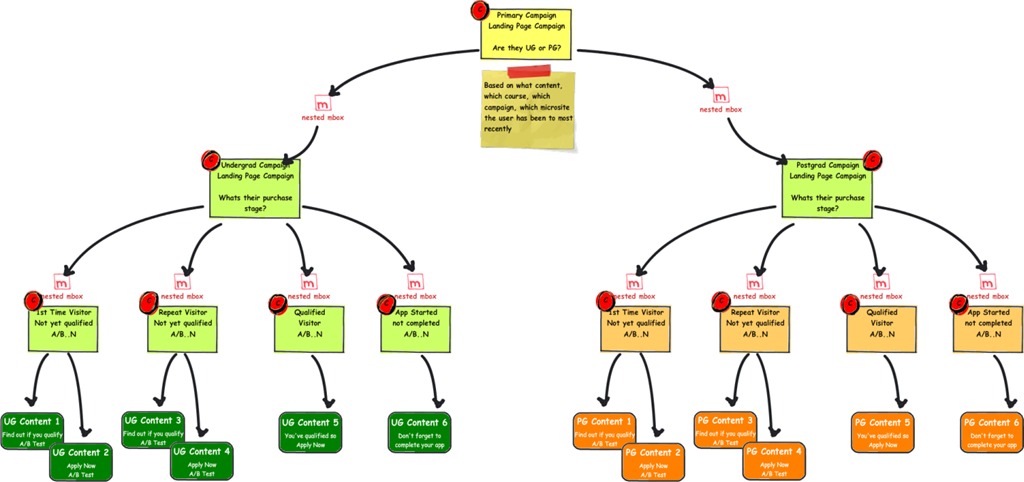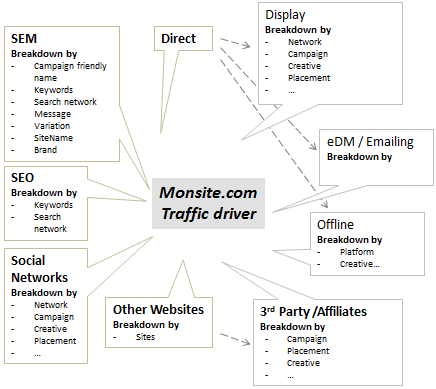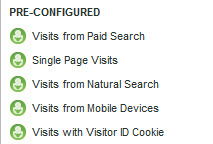Time to take a look back…
Like in every relationship, at the beginning you cannot hold yourself to compare the new to your ex. My ex analytics companion was Google Analytics since a long time, so I compared every features available or not. No need to reinvent the wheel, there are already plenty of great posts blog which compare Google Analytics & Site Catalyst, please refer to them if you need a feature by feature comparison:
– SiteCatalyst and Google Analytics comparison, conceptually speaking: Part 1 and Part 2.
From my point of view, I’ll just say that both have more or less the same basic metrics that you need but GA is much more easier to handle at first because GA is more user friendly and there is almost no set up when SiteCatalyst needs a lot configuration from the beginning which will ask for ressource in your team. Beyond the basic metrics on both tool, you’ll need time to customize it: eCommerce tracking, Campaign tracking, Social Media, Segmentation… all those features are not native in the tool and more or less easy to set up.
SiteCatalyst may be a pain in the ass to set up (excuse my French) but it’s more powerful, you can do a lot of things that you cannot in GA & it doesn’t come alone ! I’ll come back to that in a minute.
Finally, Google Analytics is FREE when SiteCatalyst is not.
However, I am here to talk about Adobe products : Site Catalyst, Discover & a little about Test & target, as to be honest I tend to use a lot more of Discover those days than Site Catalyst – essentially because it’s much more flexible to handle a large amount of data and I don’t need to call Adobe consultants to enable the functions that I need (as correlations, subrelations…).
Just a quick note to explain why I choose to speak only about Adobe products in this blog post – no bribe here – it’s just that lately I have been working exclusively with them and I get to know them and grew fond of some features. Plus, I passed my User certification & I am currently on a training for Implementation ! So why not use all this cool stuff I learned and put them into a post.
So let’s say that, as an analyst we want to Get useful data & Turn them into actionable insights to be able to Suggest, Recommend, Test in order to Optimize our website towards our Business Goals.
How specific features of Adobe products can help to do this in a upper level way?
My favorite first: SAINT Classification
SAINT Classification is useful to give sense to various unique items & allocate each item multiple categories. To be more specific, thinking about traffic channel driver performance, imagine that you are using a tracking code for each of your online advertising campaign, creative… such as on your landing url will look like www.monsite.com?cid=AA00112233 (‘cid’ being the default container for external campaign tracking) and your referring domain is wwww.referrer.com. Site Catalyst will be able to identify traffic coming from the referring domain and if you enabled it, Site Catalyst will be able to identify traffic from cid=AA00112233 (thanks to the GetQueryParam plugin), you could even breakdown Referring Domains by Tracking codes. However seeing metrics associated to AA00112233 is not really user-friendly for an analyst, except if you know by heart what creative, message and so on the code is referring to.
That’s when knowing about SAINT Classification become useful as you can import a reference file to Site Catalyst that will classify each of your tracking codes into comprehensive categories such as Campaign Name, Creative, Message and so on. You will be able to breakdown every category by every category thanks to Classification hierarchy. See below for classification examples:
Using SAINT Classification in this case, will help you to get useful data about your marketing effort performance : learn how a specific channel, campaign, placement, creative, message… is working and most of all leading your visitors to engage & convert on your website.
Second one, will be Processing rules, a bit nerdy but useful
This one is pretty handy as it happens that once your implementation is done, you realized that you have forget something and your IT guys are not available or it means waiting for too long…
You have to be certified to use it as it’s kind of dangerous tool. So I did take the exam just because I love danger, ahahah… Anyway, let’s take a real life example: copy an eVar into a prop or vice versa. This one is very handy as if I want to know how many times someone is searching for a specific keywords and if this search turned into an order, I would use an s.prop5 to count the volume of searches and an eVar5 to know if this search converted. Imagine you forget to set up the s.prop, you can then use processing rules to tell Site Catalyst that eVar5 = s.prop5 for instance.
Segmentation
According to eMarketer, an obvious trend for 2013 is fragmentation : “The expansion in the number of media channels has fragmented audiences” and well obviously you will need to identify and understand how your various type of audience is interacting with your website. I strongly believe in segmentation for better understanding of your audience & marketing decision making. Segmentation to analyze your marketing effort and especially to understand your different type of visitor. I am not afraid to be redundant, but this is one of the key to optimization.
A first step will be to consider the “how”, how am I going to collect the data from my different channels – well the point above already answer to part of this in details & you shall know as well that Site Catalyst identify automatically some of your sources (regarding search you do need to enable it first in your report suite manager), if you want to have a more detailed view use s.campaign and finally use SAINT Classification to categorize your campaigns from a business owner point of view.
The magic about that and segmentation in Site Catalyst 15 is that as your data are captured and collected you can use any of these as a dimension to filter your report and create segment!
Site Catalyst already set some out of the box segment for you:
Test & Target
Test & Target is another tool from Adobe, not directly related to Site Catalyst except if you use the plugin to connect both, which I highly recommend. Why? Because as its name points out Test & Target is a tool to Target your content and well it make sense to me to rely on your segmentation strategy to target content to the right user.
Aside from the targeting feature, Test & Target allows you to do AB or MVT Testing on your content : every kind of content such as text, image, landing page… and the testing can be used in the same time as the targeting. For instance, you can send an eDM to your database, this email will have a call-to-action a specific landing page – you can decide to have various landing page depending on the audience: if it’s a fist time visitors display this content or this one (AB Testing) or if it’s a returning visit display this or that message…
Have a look below of how far you can segment, test and target:

This will allow you to test, test and optimize your suggestions that came from your data observations or even your gut feeling.
As a stand alone tool, from what I experienced I was not really happy with the tool, however I was conscious that it was a powerful tool, a difficult setup and a lot of followup if you want your business owners to really get involved and use it. Practice is from my point of view the best ally of this tool but not every one have the time or the patience to it.
Last and not the least: Reading
For those who know me, I’m a compulsive reader… I read as much as I can, daily, some time work related and hopefully most of the time it’s not work related.
However here are work related best reading resources I read religiously :
– Adobe Digital Marketing Blog
– Web Analytics Demystified
– and the rest are on Twitter, some name you should follow: @usujason, @erictpeterson, @tim_ash, @johnlovett, @benjamingaines and so on…
I am just ending Day 4 of Site Catalyst Implementation training (hopefully I will be able soon to implement Site Catalyst by myself…), and there is so much more I could tell now (form analysis, cross-channel analysis, context data…) but let’s keep that for another article and after some practice first !




Pingback: Analytics & Website Optimization wishes for 2013! | Weboptimeez